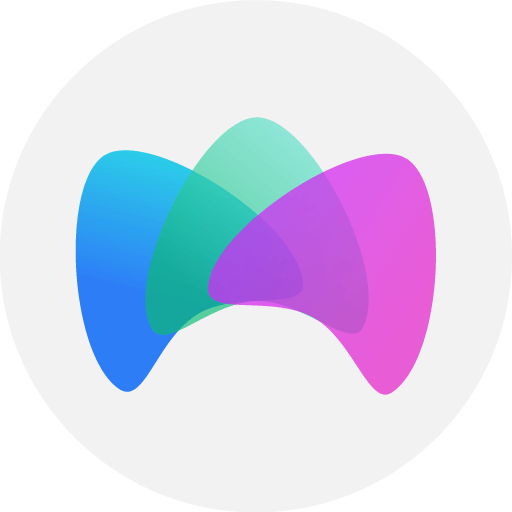
Are you wondering how well your webinars resonate with the attendees? A simple way to figure it out is to ask for feedback via polls, surveys, or open letters.
Feedback During A Successful Webinar
Table of contents
Why Ask for Webinar Feedback
The reasons are manifold. Check out some of them below:
- Feedback helps identify what works and what doesn’t in your webinar. This allows you to make more informed choices the next time and improve as a result.
- You can also get ideas for future events. For example, you may suggest various webinar topics, and your attendees can help you identify the best one with their suggestions.
- Sharing their opinions makes participants feel like they matter (and they do). They can open up to you, providing a deeper personal connection.
- Finally, you can use attendee testimonials to market your future webinars to potential viewers and diversify your landing page.
Now that you know the whys, it’s time to think of the best ways to ask for feedback.
When to Ask for Webinar Feedback
There are three main times to ask for feedback:
Before the webinar via email
Sending a small poll to the webinar registrants lets you find the attendees’ pain points before the event and adapt your content accordingly.
Make sure you address only the most frequent requests and not spread yourself thin. Give yourself at least two weeks for thorough preparation.
During the webinar via an embedded poll
The most effective way to ask for feedback is to run a small poll as part of the webinar.
While many people ignore emails, many would not mind filling in a one-minute survey right between your presentation and a Q&A session.

After the webinar via a survey
Send a quick survey to attendees and non-attendees within 2 hours after the webinar airs.
This way, you can evaluate the success of your event and get some insights for your future endeavours.

Remember the no-shows who chose to watch your webinar after the fact. According to BigMarker, 28% of people want the ability to watch the successful event after it airs.
Even though they were not present at a live event, they are still your consumers with valuable ideas.
Related Story Webinar Follow-Up Emails: What Emails Send Attendees after Webinar
How to Ask for Webinar Feedback
There are different types of questions you can ask. Let’s review the most common ones:
Single choice questions
These are good for general questions such as the attendee demographics: age, gender, location, employment or marital status.
While these answers can be helpful for future marketing strategy, not everyone will be comfortable sharing personal information with you.
It’s your attendees’ right not to disclose their private data — and you should respect that. Such questions should always be optional, no matter how helpful the answers could be.
The general rule is to avoid personal questions unless relevant to the content you deliver.
Multiple-choice questions
It’s essential to plan for the future: so why not suggest a couple of topics for future events in a post-webinar survey?
Here it’s a good idea to allow your viewers to arrange the topics in the order of preference. This way, you better understand the customers’ wants and needs.

Open-ended questions
Open-ended answers are hard to analyze, especially when you’ve got a bigger audience. Such questions are better suited for webinar creators with fewer viewers.
However, you may still do them with bigger audiences: single out the most frequently used words and focus your analysis on them.

Listening to your audience is crucial when you are a beginner since you lack experience and need their feedback to grow.
The possible variants here are:
1) Why did you decide to join our webinar? / Why did you decide to skip the event?
2) What was your favorite part of the webinar? What did you like the least?
3) Did we meet your expectations? How could we do it better?
Of course, you can ask many more questions depending on your situation. However, even these simple inquiries will help you customize your future events.
Scale questions
You’ve seen these questions numerous times before. However, we recommend that you use them extensively since they are straightforward to answer: all attendees need to do, is click on a number from 1 to 10.
Examples are:
1) On a scale from 1 to 10, how satisfied are you with the webinar content?
2) On a scale from 1 to 10, how happy are you with the Q$A session?
3) On a scale from 1 to 10, how likely are you to recommend the event to your friends and colleagues?
Again, these are just some examples. Your questions will depend on your industry, the webinar topic, and the type of feedback you want to obtain.
Tips to Get the Webinar Feedback
Let’s say you have the questions at the ready — now, how do you get your attendees and even the no-shows to answer them?
Here are some valuable tips to boost your chances:
Keep the email/questions/ short
No one likes reading 5-line paragraphs only to be lost in the middle. Keep your emails and questions short and to the point.
Related Story How to Avoid Common Mistakes in Email Newsletter
Thank your viewers/no shows
Thank them in the beginning for showing interest in your webinar. Say thank them in advance for filling in the survey.
It is not cheesy — merely professional. So keep the good vibes flowing, and maybe (just maybe) your participants will carve out a minute or two of their busy schedules.
Offer a reward at the end
Something as simple as the presentation slides or a webinar transcript is better than nothing. So even if you do not have a book or any previous recordings to share, offering even the most minor reward can save the day.
Mention how quickly it will be
It will take just a minute, I swear.
People are scared of long-winded surveys filled with hundreds of questions. So it’s best to let them know from the start that this is not what your poll/survey will be.
Marketing future webinars
Last but not least, calling clients after the webinar to market your future events can make a huge difference. There are a couple of steps that you should take into consideration. Why?
Because of the common mistake – you shouldn’t make it obvious that your main goal is to sell the product.
Also, you have to realize that you can benefit from this action by marketing future events and getting feedback. It’s better to make your interlocutor feel like their opinions will be relevant and make a difference. You and the person you’re speaking with need to feel that your conversation will be profitable.
Present to your audience how they can benefit from giving you feedback. Ask for their opinions, what they think could be made better, or what you could add next time. Remember to mention what you are offering, for example:
- A special discount is offered when a client gives feedback or signs up immediately for a webinar.
- Offer additional bonuses, like training materials.
- Present benefits of loyalty programmes, if you have one.
- Answer any questions – about the webinars, programmes etc.
Why is it important? Firstly, you will get to know your clients. Who attends your events is crucial because when you know your target group, you will also know how to conform to ads, find more clients, and identify the purpose of your attendees (Why did they attend? What did they want to learn?). Secondly, any feedback is helpful. Thanks to it, you will know how you can improve your events. Finally, even if you don’t sell the product now, you’ll get to know someone who might be interested in future events, or you can find someone interested in being a presenter in one of your webinars.
As you can see, it’s a critical step that shouldn’t be neglected.
Conclusion
Webinar feedback surveys are crucial to your growth as a presenter and a webinar creator. So please do not treat them lightly: by asking the right questions at the right time, you can make a world of difference in your webinar strategy.
A webinar satisfaction survey is a tool used to measure the level of satisfaction of participants who attended a webinar. The survey gathers feedback on various aspects of the webinar, such as content, presentation, audio/visual quality, and overall experience.
Webinar satisfaction surveys are crucial as they provide valuable insight into what the attendees thought of the webinar. This information can then improve future webinars, ensuring a better experience for attendees. The feedback can also help identify areas of strength and areas that need improvement, providing actionable data for the organization conducting the webinar.
The time to complete a webinar satisfaction survey will vary, but it typically takes around 5-10 minutes. Therefore, the survey should be designed to be quick and easy to complete to ensure a high response rate.

An expert behind the simplified online meeting and webinar software platform, MyOwnConference. In today’s flexible work environment, Dan offers invaluable life hacks, in-depth reviews, and savvy tips for organizing, promoting, and excelling in virtual conferences and webinars.
